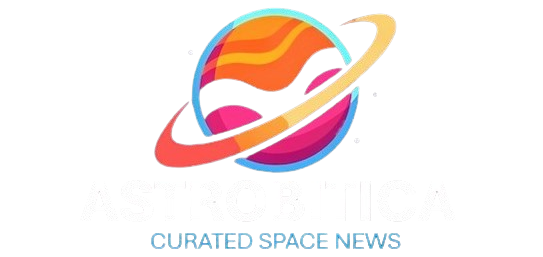Category Archives: Phys.org
Rising odds asteroid that briefly threatened Earth will hit moon
Exploring Titan’s icy hydrocarbon cycle

Though wildly different in so many ways, Earth and Saturn’s moon Titan have something important in common. Among all the objects in the solar system, they’re the only two with liquids on their surfaces. There are parallels in how the liquids move in cycles on both worlds and a new mission proposal outlines how we can understand Titan better by studying these parallel processes.
When a black hole winks at you: Variability identified in supermassive black hole in Andromeda galaxy
Students design a mission to Venus on the cheap
Studying Uranian moons using passive radar sounding

How can Uranus be used to indirectly study its moons and identify if they possess subsurface oceans? This is what a recent study presented at the 56th Lunar and Planetary Science Conference hopes to address as a team of scientists investigated using passive radar sounding methods from Uranus to study its five largest moons: Miranda, Ariel, Umbriel, Titania, and Oberon. This study has the potential to help researchers better understand the formation and evolution of Uranus and its largest moons despite a spacecraft not currently visiting Uranus.
Long-term measurements reveal cloud sensitivity to changes in atmospheric aerosol concentrations
Video: What are the dangers of going to space? We asked a NASA expert
Dark energy may not be constant—this discovery could undermine our entire model of cosmological history
Solar cells made of moon dust could power future space exploration

The same dirt that clings to astronauts’ boots may one day keep their lights on. In a study published in Device, researchers created solar cells made out of simulated moon dust. The cells convert sunlight into energy efficiently, withstand radiation damage, and mitigate the need for transporting heavy materials into space, offering a potential solution to one of space exploration’s biggest challenges: reliable energy sources.
A novel approach to assess sources and spatial-temporal variations of atmospheric mercury

A research team, led by Professor Sung-Deuk Choi from the Department of Civil, Urban, Earth, and Environmental Engineering at UNIST, has developed a novel assessment technique to accurately identify the sources and spatial-temporal distribution of atmospheric mercury. The study has been published in the Journal of Hazardous Materials.
Solar wind compresses Jupiter’s magnetosphere, creating a hot region spanning half the planet’s circumference
Webb telescope captures photos of the asteroid that won’t hit Earth in 2032
The significance of the recent ‘baby pictures’ showing the universe when it was just 380,000 years old
Ultralight dark matter could explain early black hole formation

A black hole is a region of space where gravity is so strong that nothing, not even light, can escape. There are two main types of black hole; stellar mass and supermassive black holes, and they differ in size, formation, and impact on their host galaxy. Stellar mass black holes, a few to dozens of times the mass of the sun, form from collapsing massive stars. Supermassive black holes, on the other hand, are millions to billions of times more massive and tend to live in the center of galaxies and grow through accretion and mergers.
United Launch Alliance and Amazon set first launch for SpaceX Starlink competitor Project Kuiper
Q&A: Webb finds asteroid 2024 YR4 is building-sized
How space law aims to regulate ‘space junk’ and protect Earth

While life on Earth has been dramatic enough lately, there’s also been an unusual amount of news from space in the early months of 2025. So far, debris from SpaceX and Blue Origin rockets has landed in locations including the Bahamas, Florida, Poland, and Turks and Caicos and caused flight delays at airports in Florida. On February 18, NASA estimated that asteroid 2024 YR4 had a 3.1% chance of hitting Earth in 2032—the highest probability of impact ever recorded by the agency—although they later reduced that estimate to 0.004%.
Webb explores effect of strong magnetic fields on star formation

Follow-up research on a 2023 image of the Sagittarius C stellar nursery in the heart of our Milky Way galaxy, captured by NASA’s James Webb Space Telescope, has revealed ejections from still-forming protostars and insights into the impact of strong magnetic fields on interstellar gas and the life cycle of stars.
Sagittarius C: Webb provides closet look yet at one of Milky Way’s most extreme environments

Sagittarius C is one of the most extreme environments in the Milky Way galaxy. This cloudy region of space sits about 200 light-years from the supermassive black hole at the center of our galaxy. Here, a massive and dense cloud of interstellar gas and dust has collapsed on itself over millions of years to form thousands of new stars.
